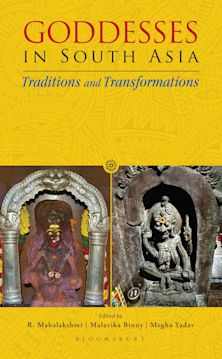- Home
- ACADEMIC
- History
- Asian History
- Visions of Democracy and Peace in Occupied Japan
Visions of Democracy and Peace in Occupied Japan
Visions of Democracy and Peace in Occupied Japan
You must sign in to add this item to your wishlist. Please sign in or create an account
Description
In Visions of Democracy and Peace in Occupied Japan, Sigal Ben-Rafael Galanti examines American occupation of Japan during World War II and the evolution of Japan’s political parties to highlight the country’s struggles for a democratic and peaceful “Japanese Japan.” Using a dynamic analysis approach, Galanti examines the pre-war, pro-democratic ideals and legacies that built Japan’s political parties and the parties’ evolving views on regime matters, socioeconomic structure, international relations, and security both during and after the country’s occupation by American forces.
Table of Contents
Part One: Background Data for Discussing Occupied Japan's Visions
Chapter Two: American Inconsistency
Chapter Three: Modern Imperial Japan's Pro-Democratic Legacies
Chapter Four: The Main Parties of Occupied Japan
Part Two: Dynamism of Visions (with Alon Lewkowitz)
Chapter Five: Ratifying a “Dictated” Constitution
Chapter Six: “To Rearm or Not to Rearm?” That is the Question…
Chapter Seven: Adopting an “American Peace”
Epilogue
Chapter Eight: Japanized Visions of Democracy and Peace
Product details
| Published | Dec 04 2020 |
|---|---|
| Format | Ebook (Epub & Mobi) |
| Edition | 1st |
| Extent | 258 |
| ISBN | 9781793622327 |
| Imprint | Lexington Books |
| Illustrations | 2 tables; |
| Publisher | Bloomsbury Publishing |
About the contributors
Reviews
-
This book brings an original perspective to the study of the US occupation of Japan and the development of Japanese democracy. It identifies pro-democracy legacies from the pre-democratic era underlying Japan’s leading politicians’ and political parties’ embrace of democracy, albeit a ‘Japanized’ version. It analyzes their ‘visions’ of the future of Japan’s democracy—primarily by painstaking reading of the Diet debates over major issues, such as the wording of the New Constitution. Combining political history and comparative politics, the book explains why Japanese democracy has been one of the few non-Western survivors among Huntington’s ‘Second Wave of Democratization.’
Ehud Harari, Hebrew University
-
Visions of Democracy and Peace in Occupied Japan offers readers fascinating new insights into the origins of Japan’s modern democracy. The carefully researched volume documents and explains how Japan’s postwar political parties fiercely contested the meaning of democracy, the appropriate role of government, how to manage Japan’s relationship with the United States, and the best path towards a lasting global peace. Through a process of deliberation, negotiation, and sometimes violence, Japan’s parties charted a new path for their country. A must-read for scholars of Japan, the volume is also an important contribution to the comparative democratization and legacies of authoritarianism literatures.
Mary Alice Haddad, Wesleyan University
-
Japan’s transformation into a stable democracy was neither coincidental nor predestined, but was a process of ‘muddling-through,’ in which many different visions were presented and debated to be adopted for important political decisions. This study highlights such pluralism that, originating as early as the postwar occupation period, laid the foundation for Japan’s successful democracy. This is a well-designed, well-researched study, and a useful course book for students interested in the political history of modern Japan.
Kohno Masaru, Waseda University

ONLINE RESOURCES
Bloomsbury Collections
This book is available on Bloomsbury Collections where your library has access.


































